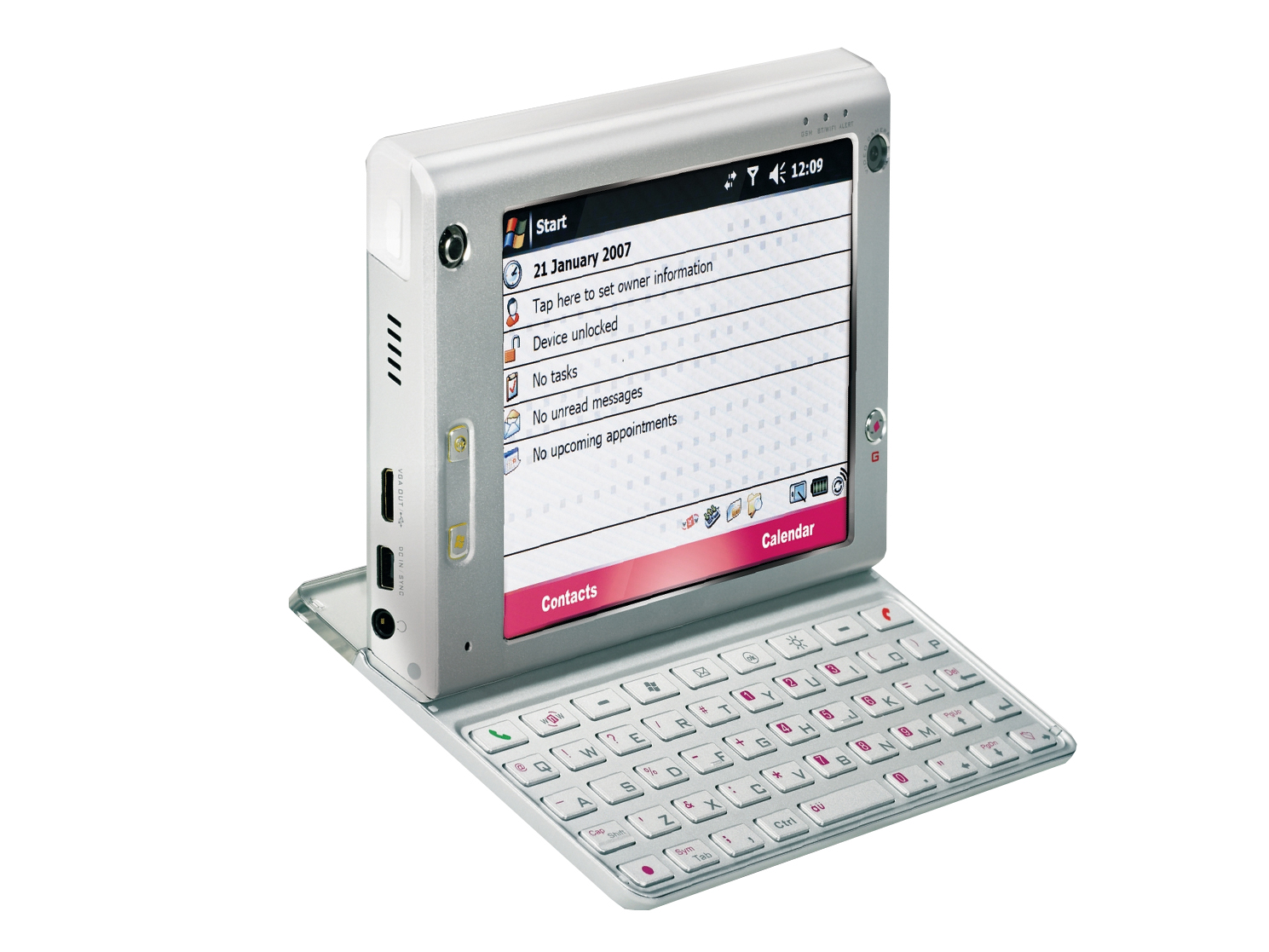TechRadar Verdict
A comprehensively specified Pocket PC offering a large screen and great usability
Pros
- +
Great screen
Well featured
Decent performance
Impressive storage capacity
Cons
- -
Keys need greater travel
Windows Mobile 5.0
Why you can trust TechRadar
Following the launch of the UMPC (Ultra Mobile PC) last year, we've seen a variety of portable products that attempt to offer better usability in a portable package.
T-Mobile's Ameo (£80 inc. VAT) sits between the UMPC and Pocket PC, combining 3G connectivity, a 5-inch touchscreen display and a removable QWERTY keyboard.
It comes bound in a leather case and looks like a small diary when closed. It can be used with or without the keyboard and navigation can be done with a joystick or via the display.
The screen is one of the best we've seen on a device this small, offering bright, vibrant and sharp images. There's plenty of space onscreen for viewing webpages, documents or even movies. A VGA adapter also lets you plug in an external monitor.
The keyboard holds the Ameo at an angle so you can see the screen when typing. Strong magnets keep it in place, and when not in use it can be clipped across the display, offering protection.
Surprisingly fast typing speeds can be achieved once you get used to the keyboard. The keys are well spaced, but still slightly too small for touch-typing. They also lack travel, so it's difficult to know if you've pressed hard enough.
Perhaps the most impressive thing about this product is the range of features included - from a SiRF Star III GPS chip to Bluetooth. It also has a 3-megapixel camera on the rear, and a VGA camera on the front for video calls.
Sign up for breaking news, reviews, opinion, top tech deals, and more.
Bulky dimensions
Although you can use it to call people, it's too large to use as a mobile phone, weighing in at 375g, but with a microphone and loudspeakers in place, it's easy to talk with the device sat on your desk.
A wireless adapter is also built in, so you'll be able to connect to networks and take advantage of cheap VoIP (Voice over Internet Protocol) calls.
The Ameo runs Windows Mobile 5.0 instead of the resource-intensive Windows Vista or XP and can be updated to Mobile 6.0 if necessary. With a 624MHz Intel Xscale processor in place, performance is far more usable than you'll find on its UMPC rivals. There's little lag, and you can be working within seconds of turning it on.
There's also plenty of storage space on offer, with an 8GB hard drive in place. If you need more space, a SDHC (Secure Digital High Capacity) compatible card reader is fitted.
The Ameo's keyboard would benefit vastly from a longer travel to the keys, and we'd like to see Windows Mobile 6.0 installed. However, it's a step in the right direction, and we could imagine using it for long stints.
Tech.co.uk was the former name of TechRadar.com. Its staff were at the forefront of the digital publishing revolution, and spearheaded the move to bring consumer technology journalism to its natural home – online. Many of the current TechRadar staff started life a Tech.co.uk staff writer, covering everything from the emerging smartphone market to the evolving market of personal computers. Think of it as the building blocks of the TechRadar you love today.
